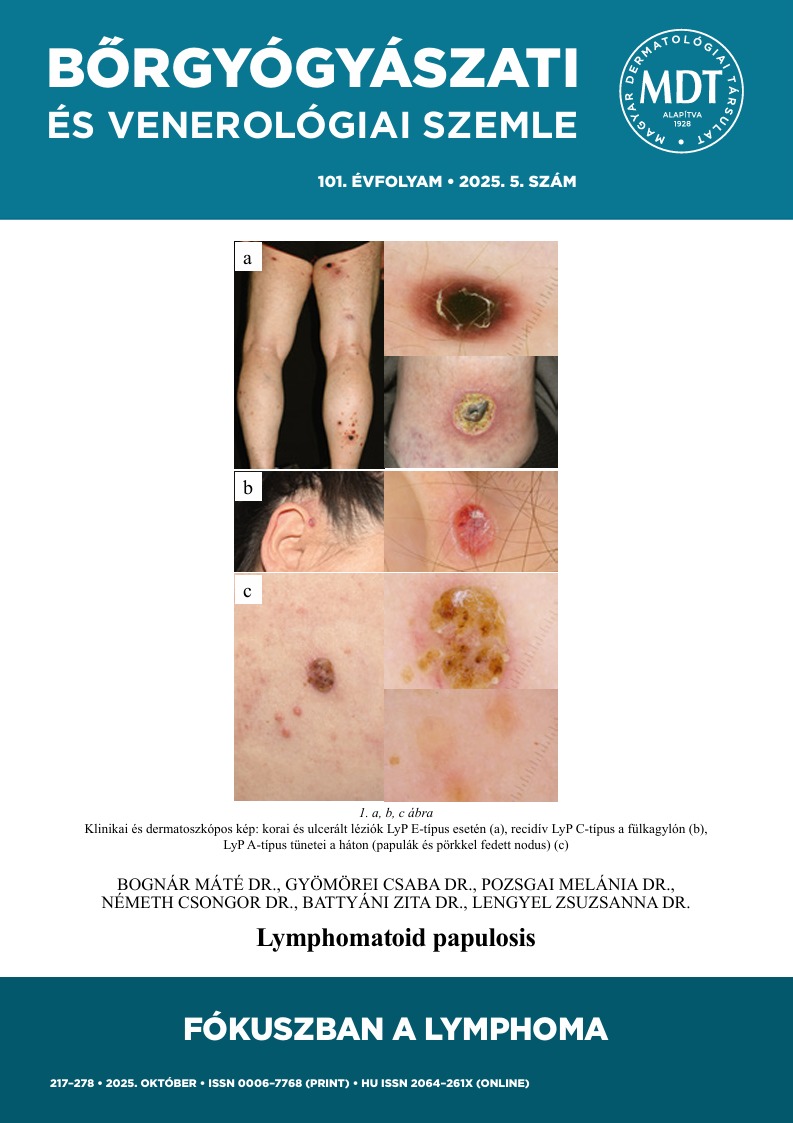Erythroderma Part II. Erythroderma of other origin (Non-CTCL erythroderma), clinical presentation, differential diagnosis, therapy
Abstract
Erythroderma is a rare, potentially life-threatening dermatological condition that can be caused by various inflammatory, autoimmune, infectious, drug-induced, and neoplastic diseases. Recognition and differential diagnosis of this condition is particularly complex, as different etiologies may present with similar clinical features. This article reviews the clinical characteristics of erythroderma unrelated to cutaneous T-cell lymphoma (CTCL); however, particular attention is given to CTCL cases associated with dupilumab treatment. The classification of the disorder is presented according to age and underlying pathomechanism, and the corresponding therapeutic approaches are outlined. In addition, a practical diagnostic algorithm is presented, which aims to increase the efficiency of etiological differentiation and support the selection of appropriate treatment.




